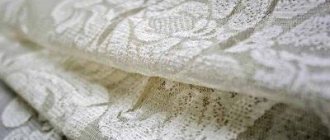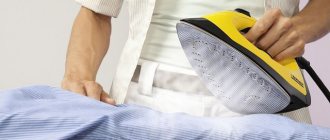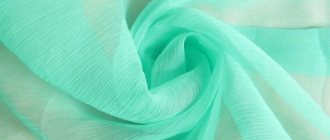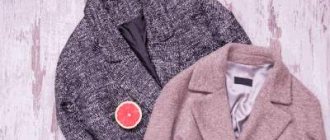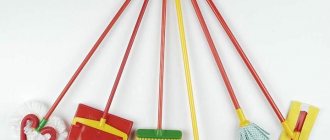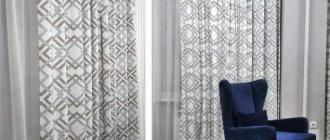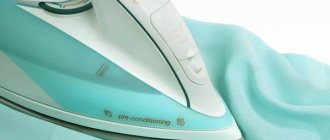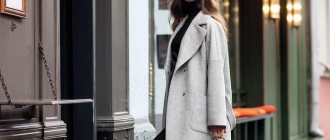Natural and synthetic fabrics have long been present in our everyday life. Polyester fabric, or polyester fabric, is also called raincoat fabric. It is durable, durable and easy to maintain. Outerwear is made from it. During washing, this fabric does not shrink or wrinkle. But sometimes things require ironing.
Polyester outerwear should be ironed with care
How to Steam a Raincoat at Home?
A polyester jacket or raincoat can be ironed in the following ways:
- Using a steamer (steam generator) or an iron with a vertical steam supply function (steam boost). ...
- You can steam the raincoat using wet natural fabric (cotton).
21 Jul.
2016 Interesting materials:
Can tiles be laid on laminate flooring? Can tiles be laid on tiles? Is it possible to lay floor tiles over old tiles? Is it possible to glue washable wallpaper in the bathroom? Is it possible to glue wallpaper a week after priming? Is it possible to glue wallpaper over old paint? Is it possible to feed rabbits Snitya grass? Is it possible to feed quails millet? Is it possible to feed pigs fodder beets? Is it possible to feed pigs flour?
How do material characteristics affect the process?
The material from which the raincoat is made plays an important role when choosing the ironing method.
It is necessary to take into account:
- the material itself;
- presence of lining;
- style features;
- the presence of decorative elements and finishes.
Leather
A leather raincoat is an easy-to-wear item that is very practical. The difficulty of smoothing such a product depends on the quality of the leather.
Soft, pliable natural leather responds well to smoothing. Such a raincoat can even straighten out under the influence of its own weight if it hangs freely for several days.
But this method is not suitable for thick, rough skin with compacted creases . Iron a leather raincoat in compliance with the following conditions:
- only through additional fabric;
- at minimum temperature;
- without steam function on the iron.
In addition to the option with an iron, exposure to steam helps to straighten a natural leather item . This can be done using a steamer.
Another option is to hold the item on a trempel over a bathtub filled with boiling water.
The rising steam will soften the skin, which will lead to straightening of creases . A suede raincoat cannot be ironed, but it can be steamed over a bathtub.
Linen and cotton
Natural fabrics are used to sew lightweight items intended to be worn in late spring or cool summer.
Such a thing can be ironed well at the temperature set according to the information on the label or at the “cotton” mode. But it is necessary to take into account the presence of a lining.
A light linen or cotton raincoat may not have a lining. If there is no lining fabric, you must adhere to the following order:
- The product is ironed from the inside out at a temperature permissible for cotton - up to 200ºС.
- Steam function enabled.
- It is advisable for the product to be slightly damp. If it has been washed, then iron it without waiting for it to dry completely. For very dry fabric, it is necessary to pre-wet the material with water using a spray bottle.
- Ironing from the inside is preferable to ironing from the front.
If there is a lining:
You can iron the raincoat from the wrong side or from the front (preferably through additional fabric).- When ironing from the inside out, the heating temperature must be set taking into account the maximum possible for the lining fabric.
- It is better to iron on the front side through a thick, damp cloth. This will help preserve the brightness of the shades and the appearance of the fabric for longer.
Linen and cotton allow the use of fairly high heating temperatures . But if the composition of the material is dominated by synthetics, the temperature on the iron should be set to a lower value.
Polyester
This material is often used to make a raincoat. Not only does it wash well, but when dried properly on a tray, it practically does not wrinkle.
If a polyester item is folded and stored compressed between seasons, it may become wrinkled.
It is necessary to iron with a warm iron, very carefully. It is better to start ironing polyester with a low temperature, gradually increasing it.
Ironing Tips
Frequent ironing is not recommended for outerwear, so it is better to avoid bruising. If, despite all precautions, it still loses its appearance, then you need to iron it in accordance with the recommendations:
- It is best to iron in a well-lit room during the daytime. The window should be on the left, the socket on the right.
- Before processing the collar, check for stains. Delete if they exist.
- If clothes have raised embroidery, it is better to smooth out the decor with steam so as not to wrinkle it.
- Knitted coats with a relief pattern are steam ironed while hanging. If necessary, on the table through a moistened iron, without pressure.
- Iron tweed items in the same way as wool items.
- If the product has decor or accessories made of delicate materials, then before steaming the coat, they must be covered with shreds.
- Before ironing the folds on a synthetic coat, they must be carefully straightened. It will be impossible to correct incorrectly ironed areas.
- Satin and twill linings are smoothed dry, as they lose their shine when wet.
- It is recommended to smooth the seams with the edge of the iron.
- To prevent the seams from imprinting when ironing a coat without a lining, you need to place strips of paper under them.
Recommendations
Ironing a raincoat at home can be quite easy if you take into account the following tips :
Before you start ironing, you need to examine the label from the inside. It indicates the composition of the fabric and the rules for caring for the product.- It is advisable to iron only clean items.
- All pockets must be checked and foreign objects removed.
- Additional removable elements, such as a belt, must be removed. They are processed separately.
- The material through which the raincoat is ironed should not fade. The ideal option is to use a piece of white cotton fabric.
A raincoat is a fairly long item that needs to be stored loosely on hangers under a cover .
The most gentle methods of influence
When working with products made of very delicate material, it is first recommended to try softer and safer options:
- We simply hang the product on hangers of a suitable shape and wait patiently for several days until it returns to its previous appearance.
- In some cases, Vaseline, castor or nut oil helps. Apply the product directly to the creases and remove with a damp cloth after the material has softened and smoothed out. This approach also restores elasticity to the tissue, so it can be used as a preventative against skin thickening.
We recommend: How to properly glue a thermal adhesive onto fabric using an iron
If you don’t want to waste time on all this trouble or there is a fear of damage to your favorite thing, then you should use the services of special service centers that work specifically with leather. But, as practice shows, the listed approaches are safe, while guaranteeing a positive result.
We recommend that you read the article on how to smooth leatherette
How to wash and dry raincoat fabric
The raincoat fabric can be washed by hand or in a washing machine. To do this, use slightly warm water with a temperature of up to 40 degrees. Low-quality products with unreliable coloring should only be washed by hand in cold water up to 25 degrees.
Otherwise, they will disintegrate or flake, fade and lose color. For fleece clothing, use warm water and gentle detergents.
For washing, choose a detergent made for wool, silk or synthetic fabrics. Universal powders without chlorine are also suitable. For washing, do not use formulations containing chlorine and aggressive additives.
Do not exert strong mechanical stress on the fabric, otherwise creases and folds may form. To avoid this, do not squeeze or rub items too hard when washing.
After the main wash, rinse the clothes in cool water several times to ensure that no soap streaks or marks remain on the material. Gently squeeze the items with a gentle, gentle squeeze and then hang them on hangers over the bathtub. Straighten the material well and remove any wrinkles.
When the water has drained, it is better to hang the clothes in fresh air or in a well-ventilated area. Dry the raincoat fabric in a vertical suspension, periodically straightening and pulling the material.
Methods for processing tulle
Various materials are used to make tulle: synthetics, linen, organza, cotton and silk.
Synthetic fabrics
Synthetic fabrics are ironed immediately after washing, without waiting for complete drying.
If the curtain has managed to dry out, you should moisten it with a spray bottle carefully, as water stains may remain. After setting the heating mode of the iron, try to iron an inconspicuous area to make sure that the selected temperature is correct. Direct contact of the material with a hot iron can lead to the formation of streaks and even burnt holes, so cover the area to be treated with a damp cotton cloth or a sheet of parchment paper
It is better to iron viscose using the steam function to prevent it from yellowing. Silk can be ironed not only from the wrong side, but also from the front side
Direct contact of the material with a hot iron can lead to the formation of streaks and even burnt holes, so the area to be treated is covered with a damp cotton cloth or a sheet of parchment paper. It is better to iron viscose using the steam function to prevent it from yellowing. Silk can be ironed not only from the reverse side, but also from the front side.
Linen and cotton products
Tulle curtains made from natural fibers do not wrinkle much even in the washing machine. Therefore, experienced housewives immediately after washing, without spinning, hang the curtains in place. Under the influence of their own weight, the curtains straighten and after drying take on their original appearance. In order not to spoil the floor covered with laminate or parquet by flowing water, it is covered with something.
Heavily wrinkled curtains are ironed with an iron at a temperature of no more than 100 ⁰C, covered with damp gauze.
Organza curtains
Synthetic and natural fibers are used to make organza, but it is ironed only when dry. Treating damp fabric with even a not very hot iron leads to the formation of wrinkles. If such an incident occurs, you need to wet the damaged area with water and wait until it dries. You should not try to stretch the material, as this will lead to loss of shape.
In order not to ruin the product, you need to know the rules on how to iron organza after washing:
- organza should not be hung out to dry with a bend over a rope, since after removal the resulting mark is very difficult to smooth out;
- processing is carried out with an iron with a perfectly flat and clean sole, set to the minimum temperature;
- paper is used as a lining, but not gauze, after which an imprint of its fibers remains on the product;
- first, decorative elements (embroidery, flounces, drapery) are smoothed with the tip of the iron;
- the tulle is smoothed from the edges to the center;
- To avoid streaks and creases, the iron should move in one direction.
Smoothing without iron
These rules also apply to silk tulles. The smoothing process is long and laborious, so you need to be patient, since there is no way to quickly iron organza tulle. Attempts to speed up the procedure by increasing the temperature or holding the iron in one place will lead to irreversible damage to the product.
Organza fabric can be ironed without ironing. If it is made from natural materials and dried outside, it is likely that you will not have to iron the tulle. The wrinkled product is smoothed out using a vertical steam generator. To do this, washed and dried tulle is hung on a curtain rod. Then the steam generator is passed from top to bottom without delays in one place. If the result is unsatisfactory, the procedure is repeated after the curtain has dried. Smoothing will speed up if table salt was added to the water during rinsing (2 tbsp/10 l). It is imperative to ensure that the crystals are completely dissolved, otherwise they will settle on the fibers.
You can avoid ironing if you hang the curtain in place immediately after washing. This method is used if organza is made from natural fibers. This method is not applicable to synthetic fabrics. For complete straightening, 2 - 3 days are enough. If after this not all the folds have straightened, then the remaining ones should be wetted with a spray bottle and left to dry.
Is it possible to iron a coat without an iron?
When it is not possible to use technology, you can also return clothes to their normal appearance. There are ways to iron a wrinkled coat without an iron. One option is to moisten it with a spray bottle and let it hang.
The ideal option is to keep it on the balcony in inclement weather (during fog or drizzle). The air saturated with moisture will saturate the fabric, its fibers will swell and straighten. Plus, pollution will disappear.
Another option to deal with wrinkles on your coat is to hang it over a bathtub with hot water or immediately after taking a shower. The steam will soften the wrinkles and they will smooth out on their own. All that remains is to take the coat into the room to dry.
In order not to subject your coat to unnecessary tests, you need to properly care for it. To do this, keep it on hangers, do not press it in the closet with other clothes. Put away for storage, neatly straightened and buttoned.
Vertical steam
If you have an iron with a vertical steamer, you can use it to smooth out wrinkles on your down jacket. To get the perfect result:
- Hang the dry item on a hanger.
- Turn on your iron with a steam generator to the maximum steam level and wait until it warms up.
- Consistently steam over the entire area of the down jacket. This method is good because you can smooth out wrinkles without crushing the fluff.
Vertical steam will help to further fluff up the feathers crushed during drying inside the down jacket.
If your jacket has been hanging in the closet for a long time, then hot steam treatment will help not only smooth out wrinkles, but also refresh it.
Steam the jacket and then go over it with a soft, dry cloth, this will remove dust and you won't have to wash the jacket again.
Vertical ironing will help refresh your down jacket
How to clean stains from raincoat fabric
To clean stains, use ammonia, soap solutions, plain water, and sometimes gasoline. Do not use stain removers as they may damage the fabric. Rub stains from edge to center using a rotating motion, avoiding clean areas.
To wipe, use a cotton pad, swab or swab. After treatment, immediately moisten the cloth around the treated area with water.
To clean the collar of a jacket, raincoat or windbreaker, to remove dirt and greasy areas, use a vinegar solution. To do this, dissolve half a teaspoon of vinegar in a glass of water, moisten a swab and wipe the damaged areas.
You can remove stains from cosmetics or perfume using gasoline. After treatment, rinse the area with a cotton pad soaked in clean water.
Sour milk whey will help remove grease stains. Treat greasy stains with this product, and then wipe the material with a solution of ammonia and salt.
To do this, mix one tablespoon of salt and ammonia with a glass of water. Then wash the fabric with a soft cloth soaked in a soap solution of liquid soap or crushed solid soap.
You can remove street splashes and rain stains with a soft brush dipped in a soapy shampoo solution. Place the product on a hard surface and place a thick cloth under the contaminated area.
Then use a brush and soapy water to scrub the area. Rinse the fabric with a damp cloth and wipe dry. Finally, you can wipe the area with a weak solution of ammonia.
Drying a bolognese jacket
If the product does not have padding, it is quite possible to hang it on a rope in a draft, but not in the sun. You can hang the jacket on hangers.
If the jacket has printed material, the drying method may be different. Synthetic padding requires the use of hangers. And the down jacket is dried horizontally, spread out on a terry or regular sheet, but folded several times. This is necessary for better moisture absorption.
The straighter the bologna jacket is positioned during drying, the better, because it cannot be ironed.
How to wash a bologna jacket in a washing machine and by hand
